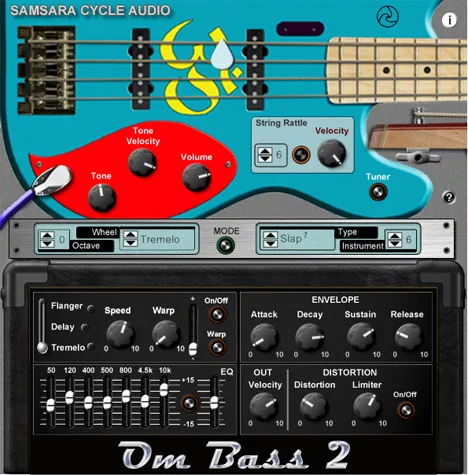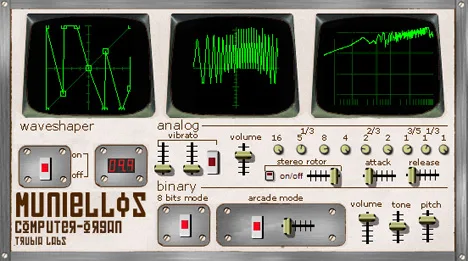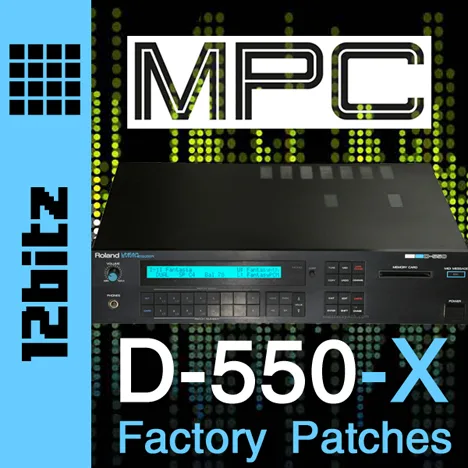In the world of digital audio, experiencing the warm, rich, and slightly unpredictable sound of analog synthesizers is a true pleasure. This is the magic that the Mini-SE plugin from EFM recreates. Forget about complex menus and endless settings; Mini-SE takes us back to the origins, offering a pure, focused approach to sound synthesis, inspired by classic instruments of the past.
Designed for musicians, producers, and sound engineers who value the character and soul of vintage equipment, Mini-SE is the perfect tool for creating deep basses, cutting leads, atmospheric pads, and experimental textures. Its intuitive interface allows you to quickly immerse yourself in the sound creation process without being distracted by unnecessary details. It’s not just another virtual instrument; it’s a pathway to a true analog vibe in your DAW.
The Heart of the Sound: 3 Oscillators
The foundation of any analog synthesizer is its oscillators, and Mini-SE is equipped with three powerful sound sources. Each oscillator offers a choice of six classic waveforms:
- Sine (Sine) – a smooth, pure wave, ideal for sub-basses and soft timbres.
- Sawtooth (Saw) – rich in harmonics, excellent for synthesizing strings, brass, and powerful leads.
- Square (Square) – has a unique “hollow” sound, perfect for basses and leads in funk or electronic music.
- Triangle (Triangle) – softer than sawtooth or square, but with more harmonics than sine, great for basses and pads.
- Noise (Noise) – the noise generator adds the ability to create percussive sounds, sound effects, or use it for modulation or adding “air” to the sound.
- Pulse (Pulse) – a variation of a square wave with adjustable pulse width, allowing you to create highly variable timbres. Although the specification mentions a Noise Generator separately, the presence of 6 waveforms per oscillator likely includes noise or a pulse variation. Let’s clarify that noise is also a separate generator for greater flexibility.
The combination of these three oscillators with different waveforms and the ability to detune them opens up endless possibilities for creating complex and multifaceted timbres, from thick unisons to bizarre soundscapes.
Modulation and Dynamics
To bring the sound to life and add movement to it, Mini-SE offers a classic set of modulation and dynamics control tools.
Modulation (Mod / LFO)
The low-frequency oscillator (LFO) is an integral part of analog synthesis. In Mini-SE, it allows you to modulate various parameters such as the pitch of the oscillators, the filter cutoff frequency, or the volume, creating vibrato, tremolo, wah-wah effects, and many others. Modulation capabilities add expressiveness and dynamics to sounds, making them less static and more “alive.”
Envelopes
Mini-SE is equipped with two independent ADS (Attack, Decay, Sustain) envelopes:
- ADS Filter Envelope: This envelope controls the change in the filter cutoff frequency over time after pressing a key. It allows you to create a variety of sound effects, from fast, percussive attacks to slow, gradual changes in timbre.
- ADS Amp Envelope: This envelope controls the change in the sound’s volume over time. It is key to shaping the dynamics of a note, determining how quickly the sound rises (Attack), how it decays to the sustain level (Decay), and what level of volume is maintained while the key is pressed (Sustain). The absence of a Release phase in the specification (ADS instead of ADSR) indicates a simplified but classic approach, where the sound stops immediately after the key is released or decays to zero after the Decay phase if Sustain is set to a minimum. This is characteristic of some vintage synthesizers and adds a certain charm.
The combination of these envelopes allows you to precisely “sculpt” the shape of each note, making it aggressive, soft, short, or long, depending on your creative needs.
Timbre Shaping: Filter
An important element in shaping the sound of a synthesizer is the filter. Mini-SE offers a combined high and low-pass filter (High pass / Low pass filter).
The Low Pass Filter (LPF) passes frequencies below the cutoff point and attenuates frequencies above it. It is the main tool for “smoothing” the bright harmonics of a sawtooth or square wave, making the sound softer or darker. The High Pass Filter (HPF) does the opposite: it passes frequencies above the cutoff point and attenuates lower ones. It is useful for removing excess “booming” or creating thinner, airy sounds.
The ability to use both types of filters gives great flexibility in shaping the timbre, allowing you to cut or emphasize certain frequency ranges and add resonance for a characteristic “wah” effect.
Operating Modes and Integration
Mini-SE supports two main playing modes:
- Polyphonic (Poly): Allows you to play multiple notes simultaneously, which is ideal for chords and pads.
- Monophonic (Mono): Allows you to play only one note at a time. This is a classic mode for bass lines and solo parts, often with a legato function for a smooth transition between notes.
The plugin also supports MIDI automation, which is standard for the modern workflow. This means you can record and automate changes to most of Mini-SE’s parameters in your DAW, which opens up additional possibilities for creating dynamic and evolving sound textures throughout the composition.
Summary
Mini-SE from EFM is a great virtual analog synthesizer that takes you back to the classics. It offers a simple yet powerful set of tools for creating a wide range of sounds, from vintage basses and leads to atmospheric pads and effects. Its focus on the basic elements of synthesis makes it accessible to newcomers and interesting to experienced users looking for an authentic analog character. If you are working in a Windows (32-bit) environment and looking for a VST instrument with a warm, analog sound without unnecessary complexity, Mini-SE is definitely worth your attention.



